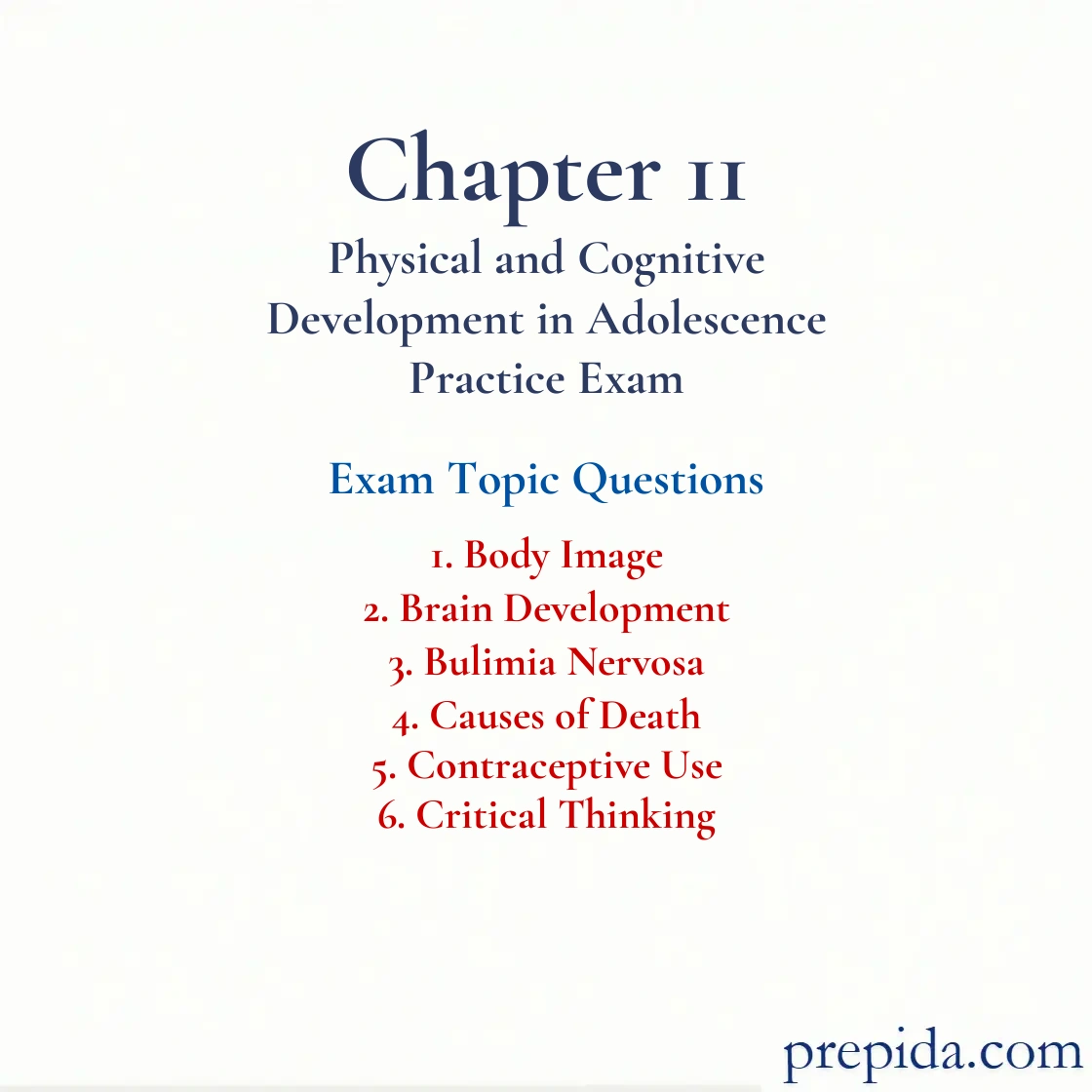
In the context of pubertal changes, preoccupation with body image is especially acute during
- early adolescence.
- late adolescence.
- young adulthood.
- late adulthood.
Adolescent Egocentrism: The heightened self-consciousness of adolescents.
Donna is concerned about her adolescent daughter's tendency to flare-up at the mildest provocations. Donna says that her daughter refuses to see reason sometimes and is unable to exercise much self-control. As a specialist in the development of adolescents, you would tell Donna that her daughter's behavior could partly be explained by the biological reason that
- the prefrontal cortex-involved in reasoning and self-control-has developed fully by early adolescence.
- the corpus callosum, where fibers connect the brain's left and right hemispheres, thickens in adolescence.
- by the end of adolescence, individuals have fewer, less selective, and less effective neuronal connections than they did as children.
- the amygdala-the seat of emotions such as anger-matures earlier than the prefrontal cortex in adolescents.
Amygdala: The region of the brain that is the seat of emotions.
Gregory is undergoing pubertal changes. He has started using addictive drugs and has started taking an increasing number of risks. Which of the following neurotransmitters is most likely responsible for these developments?
- glycine
- histamine
- dopamine
- serotonin
The ________, where fibers connect the brain's left and right hemispheres, thickens in adolescence, and this improves adolescents' ability to process information.
- amygdala
- corpus callosum
- parietal lobe
- temporal lobe
Corpus Callosum: The location where fibers connect the brain’s left and right hemispheres.
Jordan is very afraid of gaining weight, but she cannot control her eating habits. She has been making up for her eating binges by vomiting immediately after a meal or by purging with laxatives. This pattern of behavior has been occurring thrice a week for the past four months. Jordan is most likely suffering from
- anorexia nervosa.
- bulimia nervosa.
- binge eating disorder.
- rumination disorder.
Bulimia Nervosa: An eating disorder in which the individual consistently follows a binge-and-purge pattern.
Penny has been diagnosed with bulimia nervosa. It is most likely that she
- has a positive body image.
- also suffers from anorexia.
- is severely underweight.
- falls within a normal weight range.
Bulimia Nervosa: An eating disorder in which the individual consistently follows a binge-and-purge pattern.
Bulimia nervosa typically begins in
- late adulthood.
- childhood.
- late adolescence or early adulthood.
- early to mid-adolescence.
Bulimia Nervosa: An eating disorder in which the individual consistently follows a binge-and-purge pattern.
Dalia tends to go on eating binges and then purges by self-inducing vomiting or using a laxative. Which of the following conditions does Dalia suffer from?
- hypochondria
- anemia
- anorexia nervosa
- bulimia nervosa
________ are the second leading cause of death in adolescence.
- Motor vehicle accidents
- Suicides
- Homicides
- Chronic diseases
In which of the following groups is death through homicide especially common in adolescence?
- African American males
- Latino males
- Non-Latino White American males
- Asian American males
Ethnicity: A characteristic based on cultural heritage, nationality characteristics, race, religion, and language.
Since the 1950s, the adolescent suicide rate has
- stayed the same.
- decreased.
- doubled.
- tripled.
The majority of unintentional injuries in adolescence involve
- motor vehicle accidents.
- firearms.
- homicide.
- sports-related injuries.
Almost half of all deaths from 15 to 24 years of age are due to ________, with the majority of them involving ________.
- a chronic disease; cancer
- suicide; alcohol
- homicide; gang activity
- unintentional injuries; motor vehicle accidents
Which of the following is an example of a long-acting reversible contraception (LARC)?
- birth control pills
- condoms
- contraceptive implants
- progesterone injections
Constructive Play: Play that combines sensorimotor and repetitive activity with symbolic representation of ideas. Constructive play occurs when children engage in self-regulated creation or construction of a product or a solution.
If ________ are not developed during childhood, critical-thinking skills are unlikely to mature in adolescence.
- moral values
- hypothetical-deductive reasoning skills
- formal operational skills
- fundamental skills
Critical Thinking: Thinking reflectively and productively, as well as evaluating evidence.